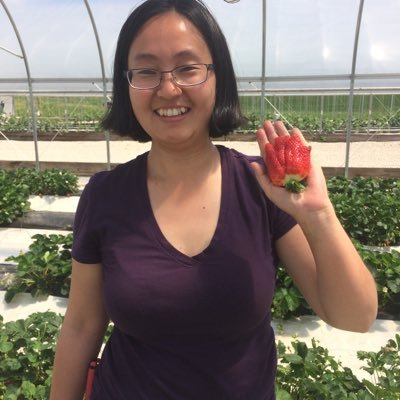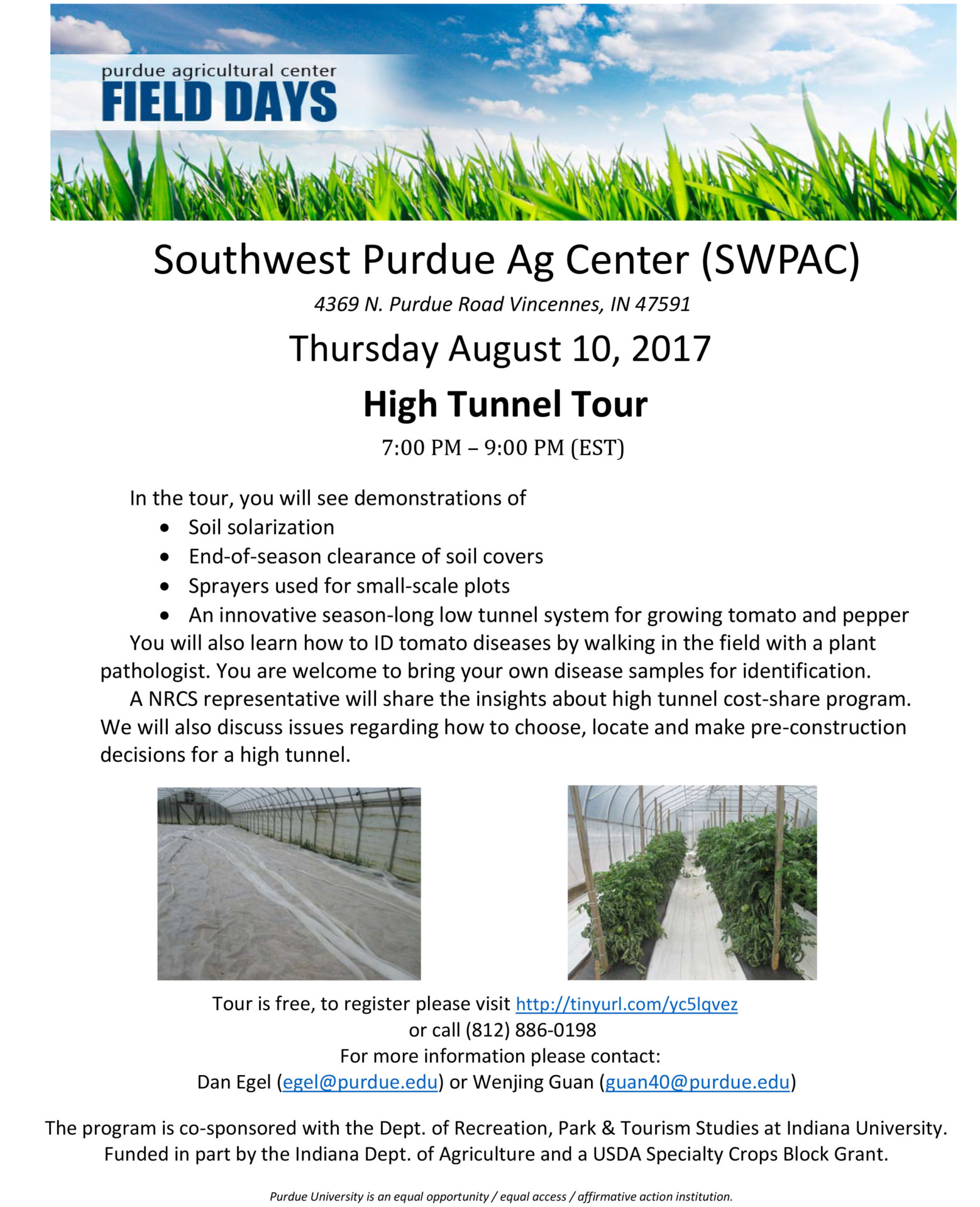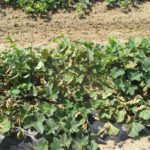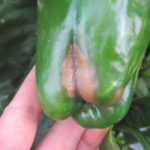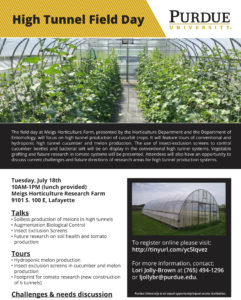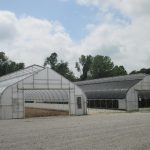When mixing fertilizers, it is important to check fertilizer compatibility before application. If incompatible fertilizers are mixed, they form insoluble precipitations that can clog drip emitters and damage sprayers used to apply foliar fertilizers (Figure 1.). This article discusses a few scenarios for which special attention should be paid on the solubility of mixed fertilizers.[Read More…]
Southwest Purdue Ag Center High Tunnel Tour Date: Thursday, August 10, 7 p.m.-9 p.m. (EDT) Location: Southwest Purdue Agricultural Center, 4669 North Purdue Road, Vincennes, IN, 47591 Registration: Visit http://tinyurl.com/yc5lqvez or call (812) 886-0198 For more information, contact: Wenjing Guan at guan40@purdue.edu or Dan Egel at egel@purdue.edu During the evening event at Southwest Purdue Agricultural[Read More…]
The Indiana Pesticide Clean Sweep Project is a great opportunity to legally dispose of unwanted chemicals. It is free of charge up to 250 pounds. To dispose of pesticides, complete the 2017 Pesticide Clean Sweep Planning form (the form is attached to the newsletter) and mail, fax or e-mail the completed form to Kevin Neal at Purdue University.[Read More…]
After harvest, storing vegetables in optimal conditions is important to ensure the whole season’s hard work has paid off. This article discusses the optimum storage conditions for tomato, pepper, cucumber, watermelon, cantaloupe and sweet corn. Tomato Ideal storage conditions for tomatoes depend on the maturity stage of picking. If tomatoes are picked at mature green,[Read More…]
Manganese toxicity is a common problem for cantaloupes growing in sandy soils across southwestern Indiana. Because symptom of manganese toxicity can easily be confused with foliar diseases, growers may misdiagnose the problem and waste fungicides by spraying for nonexistent diseases. As we now know that manganese toxicity is a nutrient related disorder caused by low[Read More…]
In the past few weeks, we have received several reports about blossom end rot on tomatoes and peppers as the crops start to set fruit. Blossom end rot is a physiological disorder (not an infectious disease) that commonly occurs on tomatoes and peppers. Initial symptoms of the physiological disorder include dark green or brown water-soaked leisure[Read More…]
Purdue Extension and Indiana University are collaborating to offer a series of field days featuring high tunnels. The events will be hosted July 18 at the Meigs Horticulture Research Farm in Lafayette; Aug. 10 at the Southwest Purdue Agricultural Center in Vincennes; Aug. 15 at the Pinney Purdue Agricultural Center in Wanatah; and Sept. 27 at[Read More…]
Indiana Fruit & Vegetable Field Tour The tour will be held at Tuttle Orchards, 5717 North 300 West Greenfield IN 46140, June 28, 9:00 am -4:00 pm. On-site registration 9 am at Tuttle Orchard. Registration fee is $5 per person. For further questions contact Lori Jolly-Brown at ljollybr@purdue.edu or (765) 494-1296. Southwest Purdue Ag Center Field Day Southwest[Read More…]
Recent dry weather raises concern about effectiveness of preemergent herbicides. Preemergent herbicides applied on the soil surface need to be moved into the soil where the target weed seeds are germinating (normally 1-2 inches deep) in order to be effective. The process normally requires 0.5 to 0.75 inch of water within a few days of herbicide application.[Read More…]
Tomatoes growing in high tunnels are in the middle of or close to harvest. Developing and maturing fruit are under leaf canopies. On the top of the plants, many flowers are still blooming. These flowers will contribute to the second big harvest. Although tomatoes in June are most valuable, we certainly appreciate big, red and[Read More…]
